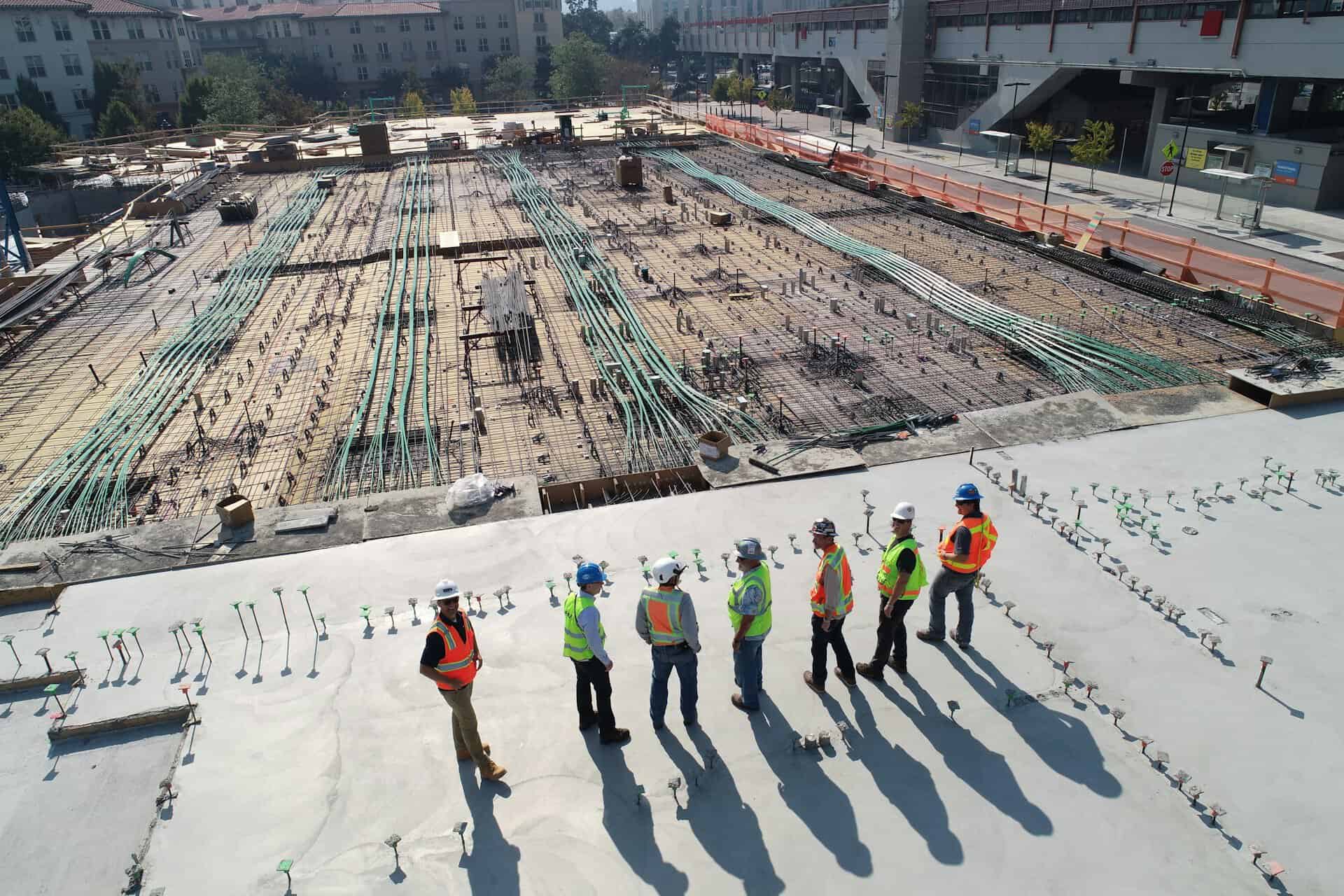If you’re like many of our construction estimation clients, chances are you’re pondering the thrilling yet challenging task of submitting a tender. You’re probably even a bit lost about where to start or what the process entails.
Well, let us assure you—you’re not alone. Understanding how a construction tender submission is reviewed can be the difference between securing a project and missing out entirely.
In this article, we will take you by the hand and walk you through the entire process of submitting tender documentation.
By the end, you’ll better understand the review process, key elements reviewers look for, and what happens after you’ve put your bid out there. We’ve also included advice on common pitfalls to avoid.
Step-by-Step Guide: How to Submit a Construction Tender
First things first: over 60% of construction projects globally exceed their agreed timelines. But more importantly, nearly 50% of construction tenders are disqualified due to incomplete or incorrect submissions.
So how do you strike the right balance?
The path to submitting a successful construction tender might seem labyrinthine, but don’t worry! Let’s break the tender process down into digestible steps designed to guide you smoothly. This way, you can create a comprehensive, compelling tender that caters specifically to the needs of the Australian market.
- Do your Homework: Understand your project inside out. What materials are necessary? What level of expertise is required? The more detailed your answers to these questions, the better your chance at an effective tender.
- Know the Industry: Familiarise yourself with the Australian construction market. Review recent trends, forecasted changes, and key players. This knowledge enables you to tailor your proposal to address current demands and future expectations.
- Prepare Your Documentation: Ensure you have all the necessary documentation for a construction tender in Australia. This includes licences, insurance, and permits. You should read and understand all the tender documents before drafting your proposal.
- Write a Stellar Proposal: A compelling, well-structured proposal sets you apart. Detail what makes your construction company outstanding and able to deliver on the project at hand. Be concise, engaging, and persuasive in your proposal. Make sure it is error-free and neatly formatted.
- Review Your Works: Don’t be in haste to submit your tender. Review your works, cross-check with the tender requirement, and seek professional advice where needed. This will give you confidence in your submission.
- Submit Ahead of Time: Avoid the stress of last-minute rush by submitting your tender days before the stipulated deadline. This will also give you time to rectify any problems that arise during submission.
If the tendering process sounds like a chaotic puzzle, experts like those at Duo Tax can handle your construction estimations process for you.
Key Elements that Reviewers Look for in a Construction Tender Submission
Understanding what the reviewers look for in your construction tender submission can significantly increase your chances of winning the bid.
Here’s how it usually works:
- Chain of thought and comprehensive analysis: The reviewers want to see your thought process and deep understanding of the project. How have you planned for potential challenges? What methods and construction technologies do you plan to use and why? The ability to show forward-thinking and anticipate issues will be a significant advantage.
- Costing: The reviewers will rigorously scrutinise your financial proposal. Does it make sense? Is it realistic, while still being cost-effective? It could be a red flag if your pricing is too high or too low compared to the estimated budget. Make sure to provide a detailed cost breakdown and justify your pricing adequately.
- Timeframe: They will also analyse your proposed timeline for the construction project. How realistic is it? Is it in line with the expected time frame mentioned in the tender? Your ability to manage time and deliver quality work within the set deadlines could likely tilt the scales in your favour.
- Sustainability: This factor is increasingly getting attention in construction tenders. Reviewers are interested in knowing how your construction methods consider environmental factors. Proposing eco-friendly practices and materials can set your proposal apart.
- Experience and track record: Reviewers will also look at your past performance on similar projects. They will want to know how your previous experiences can assure you that you can fulfil the obligations and expectations of the current project.
So, you need to create tender documentation and a project brief keeping this evaluation criteria in mind. Remember, it’s about mixing the right ingredients in perfect proportion – practical, cost-effective, timely, sustainable, and based on proven expertise.
What Happens After You Submit a Construction Tender?
So, you’ve made the move. Your construction tender submission is complete and is now out there in the ether.
But what comes next? Let’s walk you through the process step-by-step, keeping a keen eye on the unique circumstances and expectations within the Australian market.
Once your tender application has been submitted, it goes into a phase commonly referred to as the ‘assessment’ or ‘evaluation’ period. This is where the potential client or organisation carefully considers your proposal.
They will typically look for relevance, clarity, and feasibility, among other factors. This process can sometimes take weeks or even months, depending on the scale and complexity of the project.
- Initial Screening: Most construction tenders undergo an initial screening process. They check for general compliance and completeness, ensuring that all required documents are present and correctly filled out.
- Technical Assessment: Alternatively known as the ‘Qualitative Evaluation’, this is where your construction method, team expertise, and project management strategies are examined in depth. Be ready to answer any potential follow-up questions from the client during this stage.
- Financial Evaluation: Lastly, the numbers game. The client weighs up your proposed budget against the value you bring to the project. They will analyse your estimated costs, pricing structure and payment terms to ascertain financial viability.
In Australia, certain laws, such as the Trade Practices Act 1974, regulate the tendering process and prevent anti-competitive behaviour during a procurement process like this.
Australian organisations are also expected to be diligent in ensuring safety measures are in place and risk management plans have been well presented across any tender evaluation. This all forms part of the evaluation criteria when screening potential tender participants.
Your patience is key in this phase of the construction tendering process. You’ll be waiting eagerly, but remember that a detailed evaluation is a good sign; it shows they are giving your proposal the consideration it deserves. In the meantime, keep refining your skills and experience – there’s always another tender opportunity around the corner.
Mistakes to Avoid During the Tender Process
Here’s a useful list of common pitfalls you should avoid when submitting your construction tender within Australia:
- Overlooking key details: Reading the tender documents thoroughly is essential, as missing out on any important detail can lead to your tender proposal not being accepted. It’s the small details that often catch people out.
- Poor cost estimation: Your construction contract proposal must be financially realistic. Your bid can be rejected if your cost estimation is exceedingly low or high compared to industry standards. Accuracy in costing is vital.
- Not tailoring your responses: Every proposal should be crafted well to suit the project’s specific needs. Generic tender submissions are usually a big red flag for reviewers.
- Lack of evidence: If you’re claiming to have certain capabilities or experience, be prepared to back them up with evidence. Case studies, testimonials, or project histories can greatly help here.
- Non-compliance with Australian standards: If you’re applying for construction projects in Australia, ensure your response demonstrates compliance with Australian Standards and regulations in design, construction, materials, and occupational health and safety.
Steer clear of these potential mistakes to increase your chances of success and contract negotiation. Remember, it’s not just about winning the tender, but also delivering a top-quality result.
Key Takeaways
- A well-prepared construction tender submission is essential for winning contracts.
- The submission process is a meticulous one that requires effective planning and execution.
- Key elements that reviewers look for in a submission include compliance with the tender request, financial stability, capacity to complete the project, and previous experience.
- Outside of a thorough inspection and report of the physical site, the information demonstrated to the reviewers must reflect your capacity and credibility.
- Once submitted, tenders usually go through three main phases: compliance check, detailed evaluation, and contract awarding.
- Common pitfalls to avoid when submitting your construction tender include lack of clarity, missing information, erroneous calculations, and failure to sign the submission or supply necessary proofs.
- Awareness of these details in your tender response submission, the reviewing stages, and potential pitfalls can heighten your chances of winning the tender.
If you need help with your construction tender submission, don’t hesitate to contact Duo Tax. Our team of experts can handle the entire process for you, including initial cost reports, tenders and more.

Ready to get started?
Talk to one of our friendly property experts to get a free quote or more Information.







